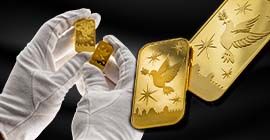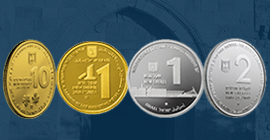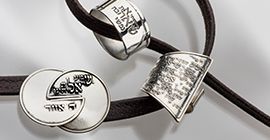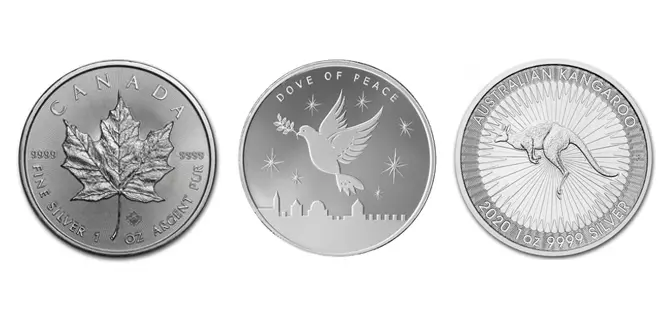Get To Know Silver, Part 2: A Rare Investment Opportunity
Silver metal is an important component in a metal investment portfolio. Silver is relatively cheap compared to gold and therefore more volatile in its price - yet this creates attractive investment opportunities for those who study the market. Periods of economic crisis have in the past led to a huge jump in the price of silver - and there are many signs that the corona crisis may also lead to a similar result.
In the first part of this article we reviewed the long history of investing in silver, from ancient Egypt to the 20th century; we learned about the stories of prominent investors who chose it, Warren Buffett and the Hunt brothers; and we also learned about its great usefulness for a wide range of industries - like electronics, medicine and photography. In the second part of the article we will analyze the price ratio between gold and silver, we will understand what can be learned from it about the viability of investing in the whitish metal and we will describe the impact of economic crises on trading in the metals market.
The high demand for silver metal from many industries causes two main, and sometimes contradictory, factors to influence the price: on one hand, influent activity of the global economy increases the demand for industrial needs and may lead to price increase, and on the other hand as an investment metal with refuge asset qualities and similar properties to gold, its price tends to skyrocket precisely when the global economy is in crisis.
Silver and gold: similar and different
One of the useful metrics for estimating the price of silver is revealed when comparing its price to gold. The gold to silver ratio is determined by the number of ounces of silver required to buy an ounce of gold. The higher the number, which means it takes more ounces of silver to buy an ounce of gold - so the silver is relatively cheaper.
The two metals usually move in a similar trend, and the most dominant metal in the trading world, gold, affects the price of silver. This is a logical result because investors who choose to purchase metals, for example in a crisis, spread their investment among the different types of metals.
From right to left: 20 Dove of Peace Silver rounds alongside the 10 Gram Dove of Peace Gold Bar.
As the price of silver is relatively low for gold, it also tends to be more volatile: to fall sharply during periods of declining demand and to rise sharply during periods when demand is soaring. Accordingly, the ratio of gold to silver also varies. It ranges from historical rates, which were common even in the Middle Ages, of 1:16 - and even reaches 1:100 in periods when gold is particularly expensive.
Throughout the 20th century, the average ratio was 1:47 and in the last 20 years has climbed to 1:60. These price levels are an important scale for any investor in metals, and can help assess what the future trend of silver metal trading will be, which tends to return to equilibrium against gold in the long run.
Invest in silver according to the golden ratio
What else can be learned from the price ratio between gold and silver? Attempts to analyze the price differences between gold and silver based on differences in supply or mining volumes have not yielded unequivocal conclusions. It is clear that gold is more expensive because its supply is limited, but there is no direct connection between the supply of silver and its price. In contrast, economic crises and recessions are more significant factors in the price dynamics of metals.
Crisis situations usually lead to a jump in the price of gold, and in line with the increase in the price ratio between gold and silver. Among the reasons for this, the fortification of investors in gold due to its status known as a refuge asset for a period of crisis; and the decline in demand for silver due to a temporary recession in industries that use it as a raw material - and are responsible for about 50% of the volume of demand for the whitish metal.
Usually, however, due to a sharp rise in the price of gold - silver value also soars. Leading factors for this are investors who want to increase their investment in metals as a haven during a crisis and scatter their metal portfolio between gold and silver. Another investment consideration that encourages the purchase of silver is waiting for the moment when the economic crisis will come to an end, and will lead to a renewed jump in the demand for silver from industry. Bottom line, silver tends to react later than gold to the trading conditions of a crisis period, but then it does so very quickly.
Thus, the obvious conclusion from many investors is to see a high price ratio between gold and silver as evidence that the whitish metal is particularly cheap and has great potential to record a jump in price - which will return it to the levels at which it usually trades relative to gold. As will be seen next, this has happened in many economic crises that have occurred in the last hundred years.
From right to left: Australian Kangaroo Silver Bullion Coin, Dove of Peace Silver Bullion and Maple Leaf Silver Bullion Coin.
An unprecedented historical record
During the Great Depression of the 1930s, when President Roosevelt's administration nationalized gold inventory from citizens and raised its price in a coordinated manner, an all-time record was set in the price ratio between gold and silver - 1:100. This year, however, that record was broken.
Even before the year of 2020, periods of economic crisis led to a spike in gold prices. For example, in the first Gulf War in the early 1990's, the ratio returned to an extraordinary peak of 1:100. In the following years the price of silver began to climb, and accordingly the ratio dropped to 1:40.
During the 2008 financial crisis, similar trends were discovered. Before the crisis, the price of an ounce of silver was about $10. After the price of gold climbed with the aggravation of the crisis and the fortification of investors in shelter assets, the price ratio between gold and silver climbed to a particularly high level of 1:85.
At the end of the expected waiting period, according to the dynamics between gold and silver that we described in the previous section, the price of silver also began to skyrocket - and increased fivefold to a level of about $50 per ounce. Accordingly, the price ratio between gold and silver dropped to a particularly low level of 1:30 during 2011. And again, according to the cycles in the business world, in the decade that has passed since the price of silver has fallen - and the ratio of gold to silver has risen (see graph).
In recent years there has been a steady rise in stock prices on the stock exchanges, until a collapse caused by the corona crisis. Even before the crisis, however, cautious investors began to prepare for the possibility of an expected change in business turnover, a halt in growth and a fall in stock prices. These investors began to buy metals, and as was the case in previous crises, they first turned to gold. As the price of gold began to climb - but at that stage there were still no clear signs of a crisis and there was still no change in the demand for silver - the historic record was almost broken when the gold-to-silver ratio reached a level of 1:95.
The unprecedented events of the Corona crisis have also breached this upper barrier. The ratio of gold to silver reached a peak this year that was probably unparalleled in human history, since man began to trade in metals. In just two weeks, in early March, the ratio of gold to silver jumped from 1:90 to 1:125. In the days that followed, the ratio dropped slightly but still remained higher than in any previously known period.

In the graph: the ratio between the price of gold and the price of silver, in dollars, between the years 2010-2020.
Another phenomenon that has been discovered these days is the halting of a large part of the production of silver, due to the closure imposed on many parts of the world, including in the major mining centers in Mexico and South America. Apparently, however, the decline in the volume of new goods has not yet affected the price.
Once the gold-to-silver ratio has reached such high levels, estimates are growing that from this point the price of silver is expected to skyrocket - until it returns to the historical equilibrium ratio to gold. Price history suggests that this was the case in times of economic crisis, but days will tell whether these predictions will come true.
Shop silver for investment now >>
Contact one of our representatives >>
The information contained in this website should not be construed as investment advice or as a substitute for investment advice suited to your own individual financial needs for purchase or investment, investment activities or transactions, or as recommendations or opinions as to the benefits of investing in gold or in any other specific products. The information contained in this website does not constitute an alternative for investment advice and you should not act upon it, before seeking advice adapted to your own personal situation and needs.




















